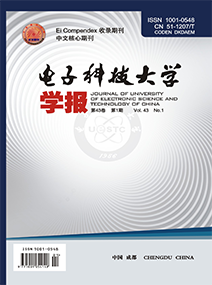A Positive Restriction Method Used in Crossing Location
doi: 10.3969/j.issn.1001-0548.2014.06.007
- Received Date: 2013-10-09
- Rev Recd Date: 2014-09-23
- Publish Date: 2014-12-15
-
Key words:
- cross-location /
- DOA estimation /
- indistinct in angle /
- passive location /
- positive restiction
Abstract: Traditional cross-location method uses the tangent of direction of arrival (DOA) as slope to obtain a least square solution by solving a linear equation. Generally, using the tangent of DOA as slope makes the direction indistinct in 180o. If the measurement error of the DOA is low, traditional cross-location method performs well, and the direction indistinct in 180o has little influence on the result of the algorithm. But once we deal with a large measurement error situation, the direction indistinct in 180o will import additional prominent error, which will have big influence on the precision of location. Therefore, this article proposes a new method which uses the sine and cosine of the DOAs to form the cross-location equations, subject to the constraint of the positive distance to find a solution. This method has no direction indistinct in 180o and improves the precision of the location result. The simulation result by the computer verified the fact that the new proposed method has a better location result than the traditional method under large measurement error.
| Citation: | SHEN Xiao-feng, XU Bao-gen, ZOU Ji-feng, WAN Yi-he, TANG Si-long, YANG Wan-lin. A Positive Restriction Method Used in Crossing Location[J]. Journal of University of Electronic Science and Technology of China, 2014, 43(6): 834-837. doi: 10.3969/j.issn.1001-0548.2014.06.007 |

 ISSN
ISSN 







 DownLoad:
DownLoad: